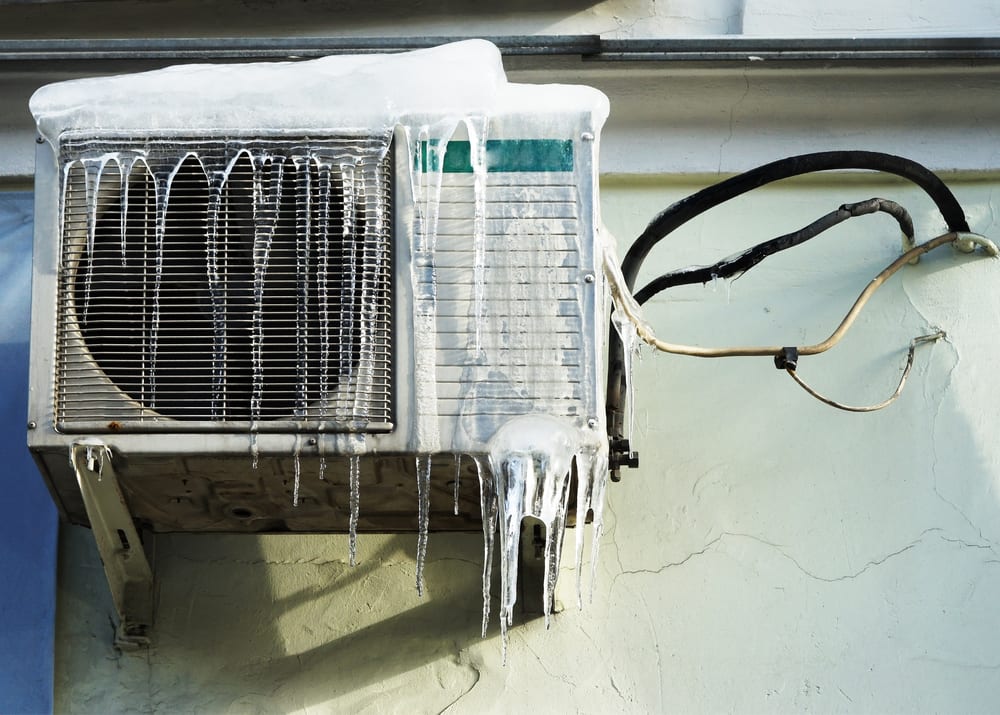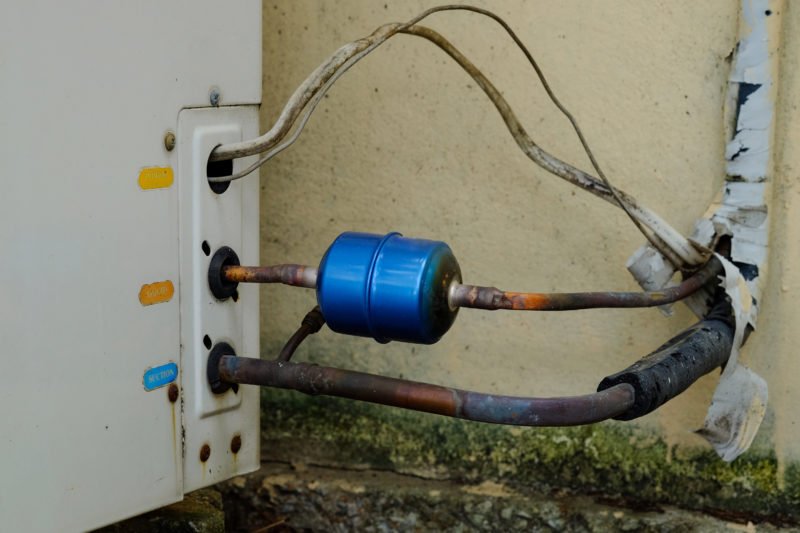Troubleshooting a Frozen AC Pipe - Effective Solutions for Home Cooling Systems
Troubleshooting a Frozen AC Pipe - Effective Solutions for Home Cooling Systems
Blog Article
Just how do you actually feel in regards to What Do I Do If My AC Pipe Is Frozen?

Intro
Discovering that your a/c pipe is frozen can be worrying, particularly during hot summer months when you count on your air conditioner the most. Recognizing what to do in such a circumstance is essential to avoid more damage to your cooling system and guarantee your convenience inside.
Understanding the Causes
Several aspects can add to the cold of an air conditioner pipeline. Recognizing these reasons can aid you address the issue properly.
Absence of Airflow
One usual source of an icy air conditioner pipe is inadequate air flow. When the air movement over the evaporator coil is restricted, it can create the coil to drop below freezing temperature level, resulting in ice development on the pipe.
Reduced Refrigerant Levels
Inadequate cooling agent degrees in your AC system can also cause a frozen pipeline. Reduced refrigerant degrees can cause the stress in the system to drop, causing the freezing of wetness on the evaporator coil.
Cold Weather Conditions
In chillier environments, freezing temperatures outside can add to the cold of air conditioning pipelines. If your air conditioner unit is not appropriately insulated or if there are leaks in the ductwork, chilly air can penetrate the system, creating the pipeline to freeze.
Dirty Air Filters
Dirty or blocked air filters can restrict air flow in your air conditioner system, leading to various issues, including a frozen pipe. It's important to change or clean your air filters on a regular basis to make sure appropriate air flow and stop ice accumulation.
Indications of a Frozen Air Conditioner Pipe
Identifying the indications of a frozen air conditioner pipeline is critical for punctual activity.
Reduced Airflow
If you discover a substantial decline in air flow from your vents, it might suggest an icy pipeline.
Ice Buildup on the Pipe
Noticeable ice buildup on the cooling agent line or the evaporator coil is a clear indicator of an icy air conditioning pipe.
Unusual Sounds from the Unit
Unusual sounds, such as hissing or gurgling, originating from your AC system can signal that there's ice existing on the pipe.
Immediate Actions to Take
When confronted with a frozen air conditioner pipeline, it's essential to act rapidly to stop further damages to your air conditioning system.
Turning off the air conditioning
The primary step is to switch off your a/c unit to stop the system from running and worsening the issue.
Checking for Blockages
Evaluate the location around the interior unit for any kind of obstructions that might be obstructing air flow, such as furnishings or drapes.
Defrosting the Pipe
You can make use of gentle methods like placing towels taken in warm water around the frozen pipeline to help thaw it slowly.
Preventive Measures
Taking safety nets can assist stay clear of future incidents of a frozen AC pipeline.
When DIY Methods Fail
If your attempts to thaw the pipe or address various other issues are not successful, it's time to hire an expert.
Importance of Hiring a Professional HVAC Technician
A certified HVAC service technician has the experience and devices essential to detect and repair problems with your air conditioning system safely and properly.
Regular Maintenance Checks
Set up routine upkeep talk to a professional HVAC technician to make certain that your air conditioning system is running effectively.
Changing Air Filters
On a regular basis change or clean your air filters to prevent airflow constraints and preserve optimal efficiency.
Protecting Exposed Pipes
If your air conditioning pipes are revealed to cold temperature levels, think about insulating them to stop freezing throughout cold weather.
Looking For Professional Help
If DIY methods stop working to resolve the problem or if you're unsure regarding just how to proceed, it's finest to look for assistance from a qualified HVAC service technician.
Conclusion
Handling an icy air conditioner pipe can be an aggravating experience, however recognizing just how to react can aid minimize damage and restore comfort to your home. By understanding the causes, recognizing the signs, and taking punctual activity, you can successfully attend to the concern and protect against future events.
Why is My AC Freezing? How to Fix an Icy Air Conditioner
As your air conditioner pumps out cool air to keep you and your family comfortable during the hot Kansas and Missouri summers, you need to feel sure that it will continue to work without fail. Sometimes, air conditioners freeze or become covered in ice. Cates Heating and Cooling wants you to understand why your air conditioner may be freezing up and how you can fix it.
What is Causing Your AC to Freeze?
It can be hard to pinpoint just what is causing an air conditioning unit to freeze, but the only way you can properly fix the problem is to determine the source. Two of the main reasons that air conditioners ice-up are:
Clogged air filters
Clogged air filters restrict the flow of air over the evaporator coils. Restricted airflow can cause the evaporator coil to drop below freezing and accumulate ice due to the humidity in the surrounding air.
Insufficient refrigerant
Low levels of refrigerant can be caused by a leak in the system or from improper installation when first charged. When the refrigerant drops too low, the temperature of the AC’s evaporator coil will drop too low and cause freezing and ice accumulation.
How to Fix a Frozen AC
The first thing you should do when you notice that your AC is frozen is turn the system off. Then, check the air filter to see if debris is clogging up the filter and preventing air from passing through. If your filter is dirty, change it out for a clean one and allow your unit time to defrost. You’ll want to make sure there is no ice on the outdoor unit, main pipe of the indoor unit, or the area around the main pipe. Once completely thawed, turn the system back and make the sure the problem doesn’t reappear.
Regular air conditioner maintenance may help you catch any damage to your air conditioning unit more quickly. These maintenance checks can locate leaks in your system or clogged air filters before they cause a problem for your unit and, in turn, your home.
If your air conditioning unit still isn’t cooling properly, the airflow isn’t improved, or you see ice reappearing on the unit. Call Cates Heating and Cooling right away. Our technicians are available for emergencies 24/7 for situations just like this one, so you don’t have to suffer in the summer heat for long. Since continued ice build-up can cause permanent damage to your air conditioning unit, don’t wait to get a local air conditioning repair service out to look at the unit.
What NOT to Do When Your AC is Freezing
Don’t continue to run the system. You will eventually damage the compressor and burn up the motor if airflow is restricted. If the damage to the parts becomes severe, you may need to replace the entire system. Don’t try to replace the refrigerant yourself without having the system leaks sealed. This won’t fix your problems, and it can result in depletion and re-icing in a short amount of time. Don’t try to remove the ice off of your unit. Instead of helping, you could cause damage to the equipment, which will result in expensive repairs. Instead, turn the unit off and allow it to thaw completely. https://catesheatingandcooling.com/blog/why-ac-freezing-how-fix-icy-air-conditioner/

I recently found that entry on Why Is Ice On My Outside Air Conditione when surfing the internet. Loved our blog? Please share it. Let another person discover it. Thanks a lot for going through it.
Call Today Report this page